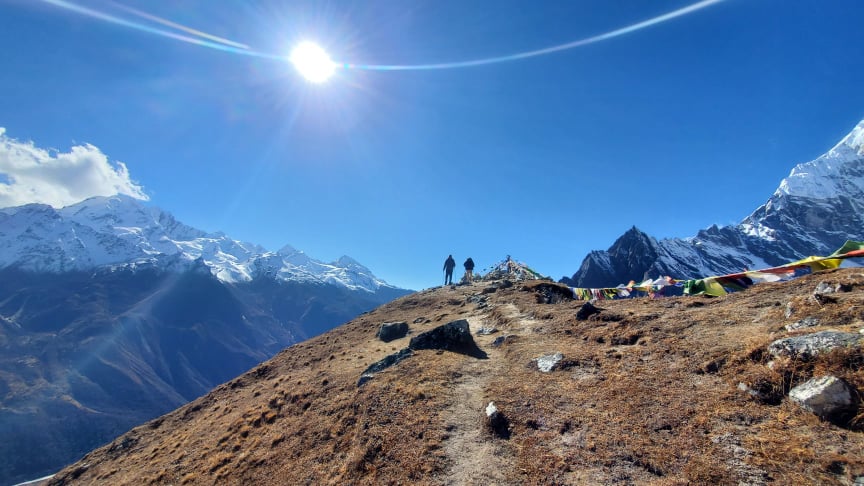
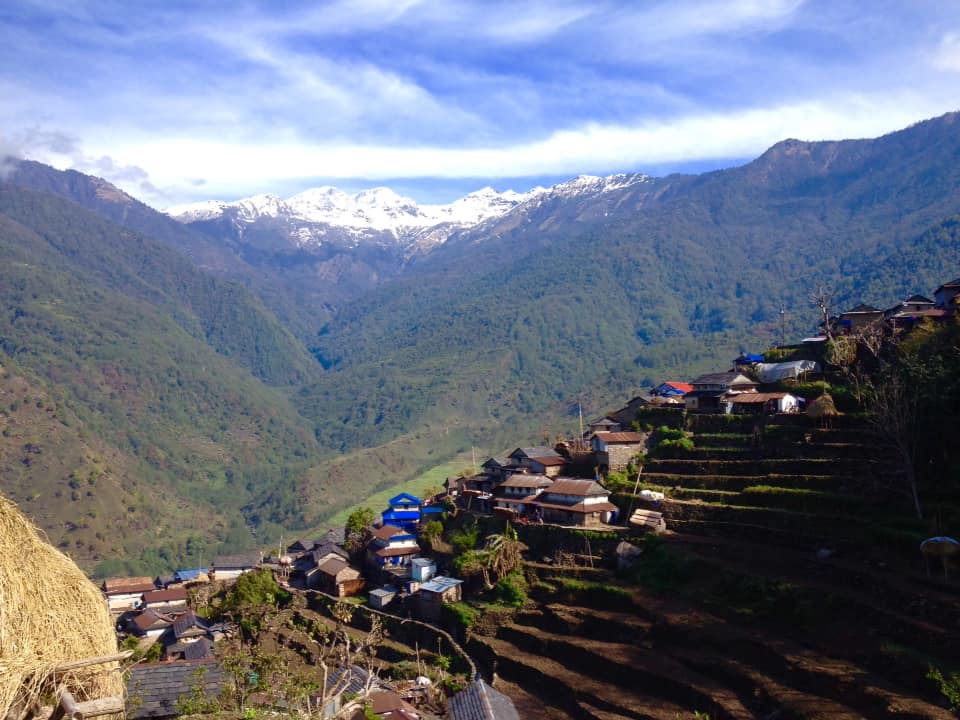
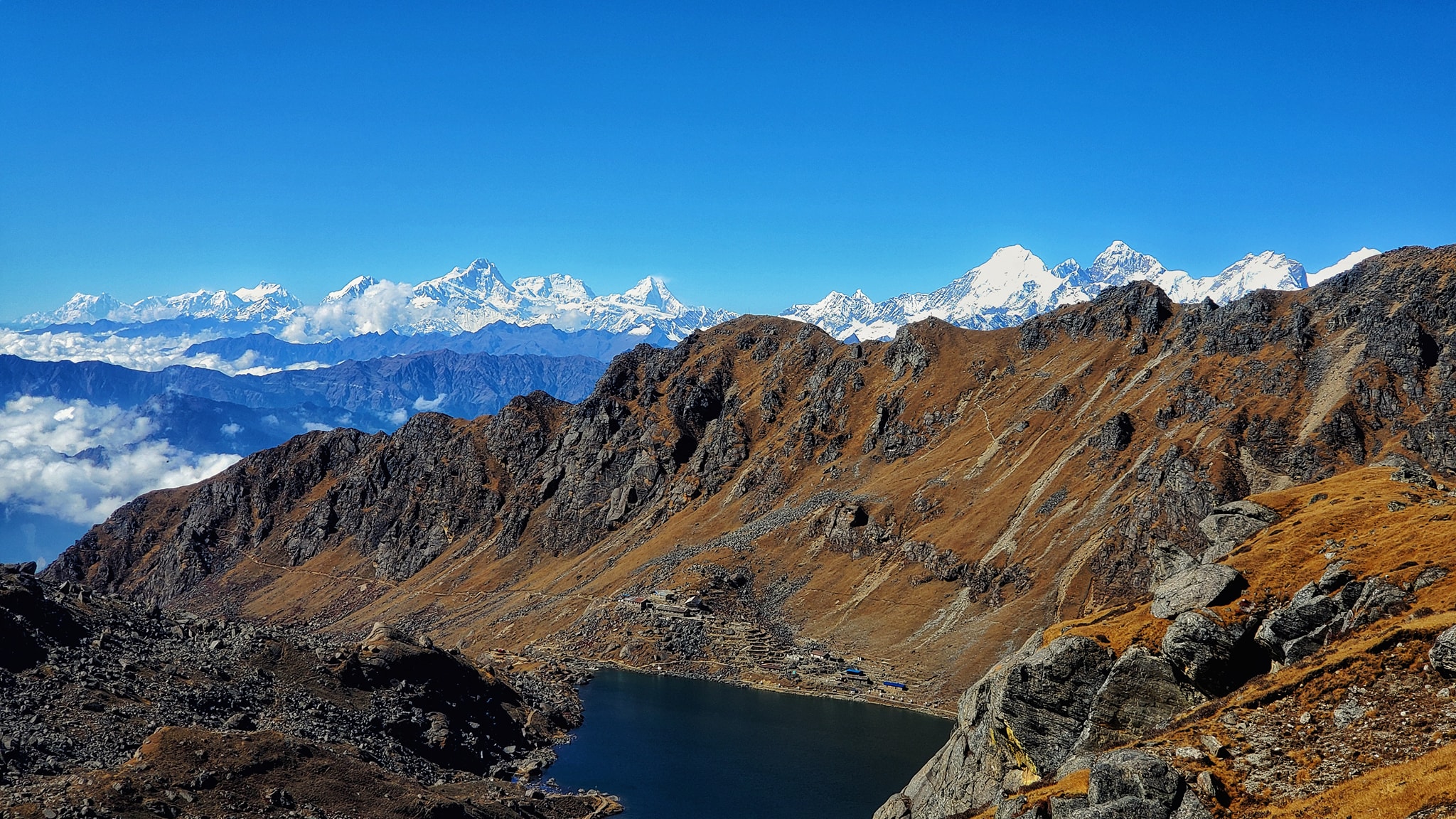
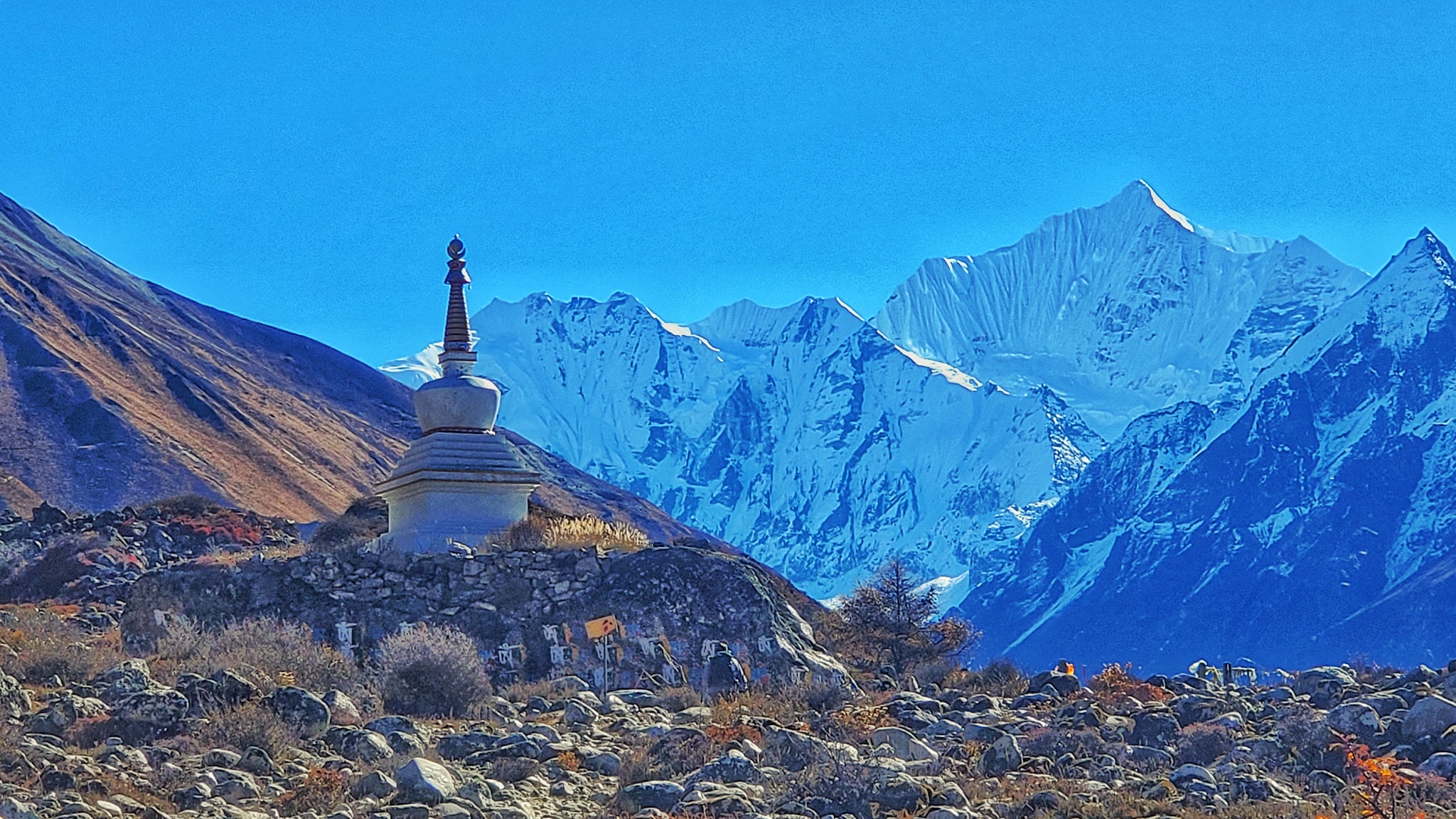
Langtang Gosaikund Trek 16 Days
TRIP HIGHLIGHTS
- Visit Tamang villages and meet local
- less crowded than Everest Base Camp Trek
- Visit Hindu & Buddhist Temples, Monasteries
- Traveling through the diverse natural terrain
- Exploring the astonishing wildlife species
- Nearest trek to the Kathmandu Valley
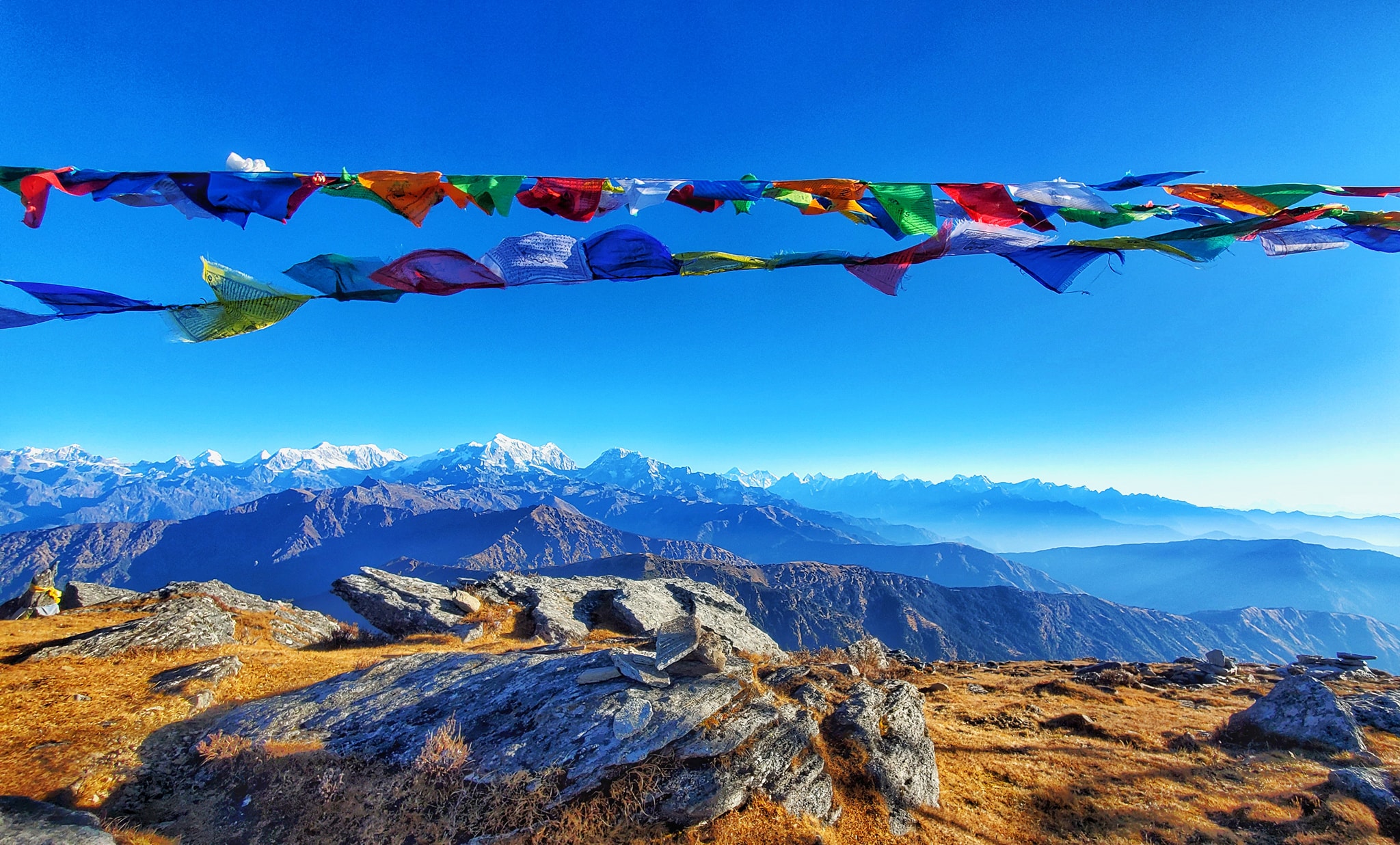
Return Guests get a 10% discount on all Trips!
-
Trip Type:
Trekking
-
Group Size:
2-12 Trekkers
-
Best Season:
Spring & Autumn
-
Max Altitude:
5,033 meters
16,512 feet -
Start-End:
Kathmandu
-
Daily Activity:
Approx 6-7 hrs hike
Location:
Langtang National Park, Nepal
- Fly into Tribhuvan International Airport (KTM)
We’re here to help:
Call (734) 997-7229 or E-mail.
DESCRIPTION
The Langtang Valley Trek is a unique expedition in the Himalayas of Nepal. While shorter than many other popular treks in Nepal. Hindu pilgrimage site Gosainkund Lakes to the ancient Tibetan Buddhist settlement in Langtang valley offers lifetime experience and adventure. Langtang National Park was established in 1976 to conserve the unique flora and fauna of the region. It is the nearest national park and trekking trail from the capital Kathmandu in the Central Himalayan Region. The park is also well known for its populations of a red panda, Himalayan black bear, snow leopard, wild dog, ghoral, and more than 250 species of birds. Hiking along the opposite direction of Langtang Rivers, trails lead higher into the valley's inner sanctum, where you can see the yak pasturelands and dramatic setting for Kyanjin Gompa, a remote monastery and yak cheese factory. Optional climbs to either Kyanjin Ri or Cherko Ri offer panoramic views of the nearby mountains, including Langtang Lirung, which dominates the valley at the height of 7234 meters.
TRIP ITINERARY
Day 1: Arrive in Kathmandu
Book your flight for Tribhuvan International Airport (KTM) as your itinerary. Your guide will pick you up and transfer you to your hotel. She/he will brief you about your next day's schedule.
Accommodation: Hotel Tibet
Day 2: Kathmandu sightseeing and trek preparation
After breakfast, your guide will pick you up to explore Kathmandu. Three primary Kathmandu heritage sites, Baudhanath, one of the largest Buddhist stupas in the world. Pashupatinath is a Hindu temple dedicated to Lord Shiva. This temple was classified as a World Heritage Site in 1979. and Kathmandu Durbar-Square is an old royal palace of the former Kathmandu Kingdom. Evening welcome dinner with the group briefs you about the next day’s activities.
Accommodation: Hotel Tibet
Meals included: Breakfast/Dinner
Day 3: Drive to Syabrubesi by private Jeep
Breakfast around 6:30 and start to drive around 7 am From Kathmandu. It will take (approx. 7-8 hours) to drive to Syabru Besi. We also get views of the Annapurnas, Manaslu, Ganesh Himal, and the peaks of the Langtang region if the weather is clear. After driving for 30km, we will stop at Trisuli bazaar for something to eat. Prepare yourselves for a few humps and bumps because the road from Trisuli onwards begins to deteriorate. During March and April, the Rhododendron forests bloom and have many species of trees, birds, and butterflies.
Accommodation: Local Teahouse
Meals included: Breakfast/Lunch/Dinner
Day 4: Syabrubesi to Lama Hotel (2470 m.)
We set out on our walk towards the north side of Lama hotel, a trek that will take around 6-7 hours. Terraced fields and dense forests with various plant species like oaks, maple, alder, and bamboo open up. We may see yellow-throated martin, wild boar, langur monkey, and red panda en route.
Accommodation: Local Teahouse
Meals included: Breakfast/Lunch/Dinner
Day 5: Lama Hotel to Langtang (3420 m.)
We follow the Langtang Khola, climbing steeply through hemlocks, oaks, and rhododendron forest to the national park checkpoint at Ghora Tabela (2970m). Beautiful views of Langtang Lirung (7225m) can be seen here. The trail ascends gradually, and as the valley becomes wider, and we pass many mani walls and Buddhist stupas, you can see the newly re-settle Langtang village after the 2015 earthquake destroyed the old settlement.
Accommodation: Local Teahouse
Meals included: Breakfast/Lunch/Dinner
Day 6: Langtang to Kyanjin Gompa (3780 m.)
We will be walking through the village of Langtang. We ascend gradually past yak pastures and the small towns of Mumdu and Sindum. After crossing a small suspension bridge over Langtang Khola, we reach an open valley. After crossing Stupa and Mani walls, you can see the powerhouse operated by glacier lake, which supplies power to local hotels. Just after a short climb, you enter kyanjin Gompa.
Accommodation: Local Teahouse
Meals included: Breakfast/Lunch/Dinner.
Day 7: Rest day and hiking to Kyanjin Ri (4773 m)
An optional day hike to Kyanjin Ri (4773 m.) will offer spectacular views of Langtang Himal, Yala Peak, Dorje Lakpa, and Langtang Valley. After hiking back to the hotel and explore around Kyanjin Gompa.
Accommodation: Local Teahouse
Meals included: Breakfast/Lunch/Dinner.
Day 8: Kyanjin Gompa to Lama Hotel (2470 m.)
Today, we descend along the Langtang Khola to Langtang village and Ghora Tabela (3020m). For the most part, the trail is downhill, descending to Lama Hotel and our stay for the night.
Accommodation: Local Teahouse
Meals included: Breakfast/Lunch/Dinner
Day 9: Lama Hotel to Thulo Syabru (2180 m.)
Following the same route until we reach Pahiro (small tea house) and ascent on the ridge for a few hours, we arrive at the pleasant village of Thulo Syabru. This allows us to gain insight into the local Tamang community’s traditions, culture, and customs.
Accommodation: Local Teahouse
Meals included: Breakfast/Lunch/Dinner
Day 10: Thulo Syabru to Sing Gompa (3250 m.)
Passing a school and army post, we ascend a steep hill above the village to Dursagang village. After Dursagang, the trail is less steep and mainly forested to the upper parts. Following the paths of Sing Gompa, you encounter some shepherd huts. After passing the ridge, we arrive at Sing Gompa.
Accommodation: Local Teahouse
Meals included: Breakfast/Lunch/Dinner
Day 11: Sing Gompa to Gosaikunda (4100 m.)
We ascend steeply up the ridge, with a panoramic view of Himal Chuli (7893m) and Manaslu (8156m). To the west, Ganesh Himal (7406m) rises behind, and to the north, across the valley, is Langtang Lirung. We pass a few hotels along the way to climb the top and cross a few ridges. We come to Gosaikunda lake.
Accommodation: Local Teahouse
Meals included: Breakfast/Lunch/Dinner.
Day 12: Gosaikunda to Ghopte (3530 m.)
We climb further, passing three more lakes near the Laurebina pass (4610m). After the pass, we descend alongside a stream to the national park post at Bhera Goth. After crossing a few small rivers and walking through the bamboo forests, we arrive in Ghopte.
Accommodation: Local Teahouse
Meals included: Breakfast/Lunch/Dinner.
Day 13: Ghopte to Melamchi
The trail continues a short uphill climb before we make a final ascent to Tharepati. From the Tharepati, we can see the Helambu region. Soon we went down to the tree line, passing beautiful waterfalls and rhododendron forest to Melamchi.
Accommodation: Local Teahouse
Meals included: Breakfast/Lunch/Dinner
Day 14: Drive Back to Kathmandu
After breakfast, drive to Kathmandu. It will take 4-5 hours.
Accommodation: Hotel Tibet
Meals included: Breakfast/Lunch/Dinner
DAY 15: DAY TRIP TO BHAKTAPUR:
After breakfast guide will pick-up you up from the hotel, Bhaktapur Durbar Square is 13 km east of Katmandu and is listed as a World Heritage site. It’s famous for its art and architecture. Many famous temples and statues are the main attraction of the Bhaktapur Durbar Square.
Accommodation: Hotel Tibet
Meals included: Breakfast/Dinner
DAY 16: FINAL DEPARTURE:
Our office staff will drop you at the airport 3 hours before the flight schedule.
Meals included: Breakfast
TRIP DETAILS
WHAT'S INCLUDED
# 4 nights hotel in Kathmandu on a bed & breakfast Basis- Twin Bedroom.
# Breakfast, Lunch, and Dinner, including tea and coffee during the trek.
# Accessible accommodation at Hotel/Lodge during the trek.
# Experienced trekking guide porter for two trekkers during the trek.
# Salary, allowance, and Insurance for all involved staff during the trek.
# National Park fees, trekking permit
# Transportation base on Itinerary
WHAT'S NOT INCLUDED
* International flight and departure tax
* Lunch and dinner in Kathmandu
* Personal trekking gear and clothing (sleeping bags available for rent)
* Tips and personal expenses
* Travel/medical/emergency evacuation insurance
* Extra nights’ accommodation in Kathmandu. In case of early arrival or late departure, early return from Trekking (due to any reason) than the scheduled itinerary
* Any other item not listed in the “Price Includes” section
WHAT GEAR TO BRING
Once you book this trek you’ll receive access to a printable, downloadable trip information packet with a detailed packing list
FAQ
How do I sign up for a trip?
Booking a trip is easy. Call us at 734-997-7229 or 303-834-5512, or Email us at info@imperialexpedition.com.
Online bookings are made via the ‘Book Now button available on each trip page. Once we confirm your booking, we’ll send you comprehensive information regarding visas, vaccinations, gear, clothing, and arrival details to ensure you are fully prepared for your adventure.
How fit do I need to be to trek in the Himalayas?
You should be moderately fit, exercise regularly, and enjoy active vacations and walking and hiking in mountainous terrain. For the Everest base camp trek, you should be able to run for an hour without stopping at any speed and still feel good to continue – OR – walk for 5-6 hours in a day with rests. Trekking is an endurance sport. Mostly you need a good attitude, which will go a long way toward the success of reaching your goal.
When is the best time to trek and climb in the Himalayas?
-
Fall (September-November): Fall is considered the best time for trekking in Nepal. The weather is excellent at this time, allowing for clear blue skies and tantalizing mountain views. Temperatures are moderate. Occasional short storms may bring snow to higher altitudes.
-
Winter (December-February): Winter brings heavy snowfall mostly at higher altitudes. This can be a good time for cultural tours and trekking at lower elevations.
-
Spring (March-May): Spring is a good time for trekking and climbing in Nepal and Tibet. The rhododendrons, the national flower of Nepal, make the hillsides a colorful paradise during the spring. It is mildly warm at lower elevations and at higher elevations, the mountain views are excellent while the temperature is quite moderate. If you trek to Everest base camp in the spring, you will have the opportunity to meet world-renowned climbers, as several Everest expeditions will be assembled at base camp.
-
Summer/Monsoon (June-August): The monsoon during the summer months can make travel in Nepal wet, muddy, warm, and often humid. Strong monsoon rains don’t usually last long, and often end with large and wonderful rainbows. However, the streets in Kathmandu can be muddy and landslides sometimes occur in the mountains. It is recommended to carry insect repellent when trekking during these months.
What sort of experience do your guides have?
Our guides are dependable, competent, and highly qualified with more than ten years of trekking experience, leading trips, treks, climbs, and expeditions in the Himalayas. Our guides speak English and the local language. We are trained in first aid and CPR. Most importantly, our guides are friendly and enjoyable and are passionate about sharing the rich cultures, traditions, and natural beauty of Nepal.
What is the routine on the trek?
Most trekkers normally start their day early around 7:30 to 8:30 am after a hot breakfast. The morning sun offers nice mountain views. You will carry a light pack for your camera, water, a jacket, and a wind layer. Around noon we will reach the lunch stop where we will spend time drinking tea, resting, and having lunch. After lunch, we normally walk for 2 to 3 more hours before arriving where we will stop for the evening. Here at the lodge we will have hot tea and relax for the rest of the day. Our day ends with dinner and then off to bed in single or double rooms in the trekking lodge.
What type of shoes or boots should I wear?
The proper footwear depends on the trek and on the trekker. Most hikes can be done in comfortable running shoes while longer more strenuous treks may require sturdy but lightweight hiking boots. It is best if you purchase shoes and boots long before arriving in Nepal. We advise that you wear your boots prior to the trek to break them in – in order to prevent blisters, which can be debilitating on the trail.
How big will the group be?
We try to bring together a small group of like-minded people. Our trekking groups are generally from 6 to a maximum of 12 members, although we can accommodate smaller groups and solo trekkers as well.
Do you arrange private or family treks?
Yes, if you would like to travel independently or with friends, family or colleagues, you are invited to choose the trip that best suits your group and the trip dates according to your schedule. We are happy to consider any number of trekkers. Our maximum is not more than 50 at a time. The cost per person for private trips is negotiated on the basis of group size, trek area, and duration.
How long do we walk each day?
Our trips are classified into three categories according to the level of difficulty. Easy adventure treks are about a week to 10 days in duration. They generally don’t go above 13,000 feet (4,000m). You can expect to be hiking/walking for around 4-5 hours a day. Moderate to fairly challenging treks are longer treks that go into a high mountain country above 13,000 feet (4,000m). Physically these trips are more demanding and tiring and may involve 6-8 hours of trekking along rocky trails in high Himalayan terrain. Strenuous treks are longer treks that go beyond the normal activities of trekkers and tourists. These include ice climbing and mountaineering expeditions. Physically challenging, these trips may involve 7-9 hours of trekking in a day and are likely to include unfavorable weather conditions and strenuous activities. Some level of experience may be required for these trips.
What type of food is served during a trek?
In general, while trekking breakfast may include a choice of porridge, muesli, omelet, fried or scrambled eggs with chapattis or bread. Lunch and dinner are generally pasta, potatoes, or rice with or without cooked veggies and/or eggs. Meat is also available, however, it is recommended to adopt a vegetarian diet. As long as the meat is stored and cooked properly, meat dishes are also safe. Tea, coffee, and hot chocolate are available at all meals. Your guide will do his/her best to make sure all food is well cooked. At some restaurants in Kathmandu, the vegetables are soaked in iodine and thus fresh salads are safe to eat. While trekking it is best to avoid raw vegetables unless you can peel them yourself. The rule is: cooked, peeled, boiled – or forget it! During the trek, you can choose what you like from the menu in the lodge. There will also be plenty of snacks available such as biscuits, popcorn, candy bars, and soft drinks. In some areas, you will find fresh fruit in season.
What if I have to cancel?
If you decide to cancel your trip, the following fees apply and are due to Imperial Expedition prior to departure when we receive written notice of your cancellation. Cancellation Fee Schedule for tours and treks:
- 90-81 days prior to departure You forfeit half the deposit
- 80-60 days prior to departure You forfeit the deposit
- 59-31 days prior to departure You forfeit 50% of the total amount
- 30 or fewer days prior to departure You forfeit the entire cost of the trip
Cancellation Fee Schedule for Climbing Trips and Expeditions:
- 180-150 days prior to departure You forfeit
- 149-89 days prior to departure You forfeit 50% of the total amount
- 90 or fewer days prior to departure You forfeit the entire cost of the trip
What are the overnight accommodations like?
In cities, you will be staying in hotels and guesthouses that are similar to those in the US with private bathrooms, showers, TV, phone, AC, etc. If you prefer luxury hotels we can make those arrangements as well. While trekking in the mountains the accommodations will depend on whether you are camping or teahouse trekking. If you are on a camping trek, then you will be sleeping in a tent. The trekking lodges or teahouses are simple shelters. There is no central heat. In the dining room where meals are served, there is often a wood-burning stove that heats that room only. The guest rooms are not heated so you will need a good quality sleeping bag, which can be rented in Kathmandu. The guest rooms are usually small and sleep one or two trekkers. The walls are thin so earplugs are a good idea for light sleepers. The bathrooms are down the hall or outside. Nowadays, there are also a few ‘luxury’ establishments along the popular trekking routes. If you are interested to upgrade, let us know and we can make those arrangements.
What happens in case of an emergency?
In the case of a serious illness or a life-threatening emergency during your trek, a helicopter rescue will be initiated. You are responsible for all the expenses incurred in such an evacuation. It is required that you have insurance that covers emergency helicopter evacuation throughout your trip. However unlikely, we are prepared for emergencies, and your guide will respond quickly to get any necessary medical help. We aim to avoid such circumstances with education and a large dose of preventative medicine.
Can I get a Nepal visa on arrival?
Yes! A Nepal visa is easily available upon arrival at the entry places. Make the process easier by downloading & completing the application form, having the correct USD cash, and two passport photographs.Visa FacilityDurationFee
Multiple entry15 daysUS$ 25 or equivalent Nepali currency
Multiple entry30 daysUS$ 40 or equivalent Nepali currency
Multiple entry90 daysUS$ 100 or equivalent Nepali currency
Custom Declaration on Kathmandu, Nepal Arrival (For Foreign Nationals)
1. Travelers are required to declare goods in excess of permitted personal effects
and duty-exempted consumable goods and restricted/prohibited goods and commercial
goods at the red channel. Travelers possessing such goods may use the green channel.
2. Export or import of narcotics, arms and explosives, wildlife and its products, and
commercial goods are restricted/prohibited. Attempt to import or export such goods
may lead to confiscation of goods, penalty, and arrest resulting in prosecution.
3. Travelers are required to declare foreign currency at the red channel if the sum exceeds
US$2000 or equivalent.
4. Permitted used personal effects are as follows in condition to return back at the time
of departure:
1. Binocular one set.
2. Video Camera and still camera one set each.
3. Portable music system one set recorded media 10 pcs.
4. Cloths and goods of day-to-day use.
5. Perambulator and tricycle one set each.
6. Bicycle one set.
7. Watch one piece.
8. Cellular mobile phone one set
9. Professional hand tools are one set for professional personnel.
5. Duty-exempted consumable goods are as follows:
1. Whiskey/wine not exceeding 1.15 liters or beer up to 12 cans.
2. Cigarettes 200 sticks, cigar 50 sticks, tobacco 250 grams.
3. Camera film up to 15 pcs and movie film 12 reels.
4. Readymade and can foods not exceeding NRs.1000.00.
5. Medicine not exceeding Nrs.1000.00.
6. Fresh fruits not exceeding NRs.1000.00
Is it possible to deviate from the itinerary?
Our specific itineraries are custom crafted with you in mind. Once we agree on a plan, we can always make minor changes and adjustments while en route. The itinerary acts as a general plan for the trip. However, there are often local events, festivals, or happenings that may capture our attention. As long as everyone in the group agrees on these changes, that is fine. Major changes to the itinerary may be made if there are political or environmental concerns. Your guide will help to make any necessary adjustments. Our trips are adventures that may take you into remote regions where unforeseen circumstances may contribute to the need for a change in the itinerary.
Any suggestions on what to do and what not to do with respect to the Nepalese culture?
Nepal has many diverse ethnic groups, traditions, and religions. There are numerous cultural practices that may appear unusual to a person on his/her first visit to the country.
- The most common greeting in Nepal is “Namaste” which is performed by placing the palms together and bowing as if praying.
- Before entering a Nepalese home, temple or monastery remember to remove your shoes and place them neatly side-by-side.
- Be careful not to use your spoon, fork, or hands to touch another person’s food, plate, cooking utensils, or even the serving dish. Do not eat from other people’s plates and do not drink from other people’s water bottles or glasses. This is considered to be impure by the Nepalese.
- Never touch anything with your feet. The feet and the floor are considered dirty.
- While traveling, dress appropriately. Women should avoid short skirts and sleeveless shirts.
- Seek permission before entering a Hindu temple. Many Hindu temples do not allow non-Hindus to enter.
- Leather is prohibited inside temples because cows are considered sacred and are not used for slaughter.
- Walking around temples or Buddhist stupas is traditionally done clockwise.
- Be sure to ask before taking photographs of the locals. Some people believe part of the soul is taken when a picture is snapped.
- Public displays of affection between a man and a woman are frowned upon and are not generally accepted.
- When the Nepalese shake their head from left to right, they may mean, “Yes”.
- Develop a genuine interest in Nepal and meet and talk to the Nepalese people. Do your best to respect their local customs and traditions.
Payment methods
For your convenience, we have different methods of payment as mentioned below. You can choose any of these methods:
1. Bank Transfer (ask for account info)
2. Mail a check made out to 'Imperial Expedition' to Imperial Expedition 218 S. Main St. Ann Arbor, MI. 48104
3. You can also pay by credit card, over the phone or online
What about transferring trips?
Tours and trekking trips may be transferred to the next year or to another date, however, the transfer must be made 90 days or more prior to departure. Otherwise, if the transfer is made 90 days or less prior to departure, you must pay the cancellation fees as outlined above. There are no fees for transferring trips more than 90 days prior to departure. However, for climbing trips and expeditions, if you would like to transfer your trip to the next year or to different dates, there is an automatic transfer fee of $1,000 that must be paid to Imperial Expedition.
Should I purchase trip cancellation insurance?
If you must cancel your trip due to illness, injury, or death of yourself or an immediate family member, trip cancellation insurance protects all your deposits and payments for both air and land costs. It is recommended that you buy trip cancellation insurance but not required.
What if Of Imperial Expedition cancels my trip?
Imperial Expedition reserves the right to cancel all or a portion of a trip due to political or environmental circumstances, which may hinder trip operations or for any other reasons beyond our control. In the event of such a cancellation, we will give a full refund for the cost of the trip. However, Imperial Expedition is not responsible for additional expenses incurred by you in preparing for the trip, visa fees, gear, insurance, or medical expenses prior to the trip. If international air tickets have been purchased, the airline’s refund policy applies.
What other expenses should I consider?
Medical advice and inoculations, health and travel insurance, travel and trekking gear, international airfare, Nepali visas, airport tax, spending money, and most meals are not included in the cost of your trip.
How much should I budget for tipping?
Your support team will work hard to please you during your trip. They will appreciate receiving a tip at the end of their service. The amount you give depends on you and your appreciation of their work. We recommend giving from $200 – $300 total in tips to your porters.
Electricity in Nepal
Residential electrical outlets in some countries including the United States use 110-120 volts of electricity and accept very specific shaped plugs. Many other countries including Nepal use other voltages, 220-240 volts to power their appliances, as well as different plugs. If you try to plug an American appliance such as a shaver or hair dryer into an outlet of a different voltage, you may destroy the appliance and cause yourself injury. There are a few things you should know about other countries (here Nepal) before you travel.
Contact Us
We are always available to answer your questions. Please let us know what’s on your mind. Good communication is important for a safe and fulfilling trip! Send us a note or call us directly:
Name: Pem Dorjee Sherpa
Phone: 303-834-5512
Email: info@imperialexpedition.com
ACCOMMODATIONS
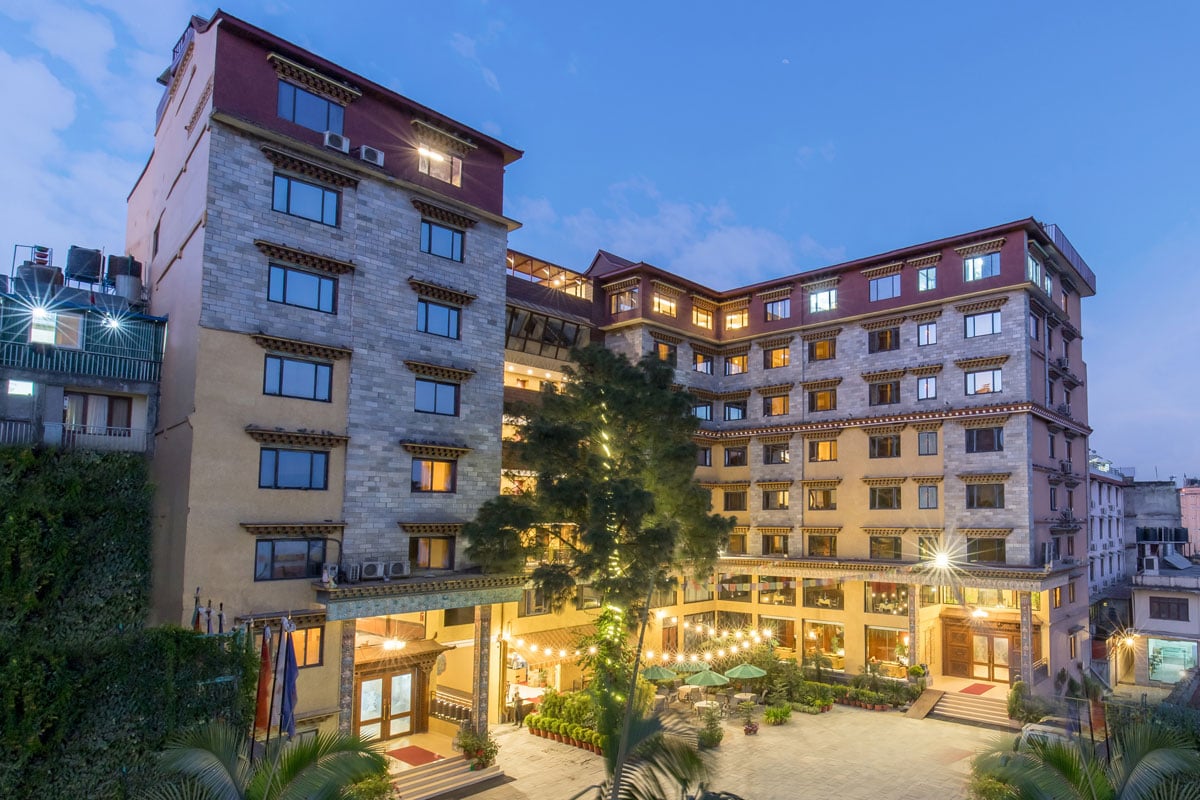
Hotel Tibet International
4 NIGHTS
Walking distance from the UNESCO Heritage Site of Boudhanath Stupa, Hotel Tibet International is a 4-star standard boutique hotel that showcases the Tibetan-Buddhist culture and heritage in Kathmandu. Inspired and decorated in Tibetan style.
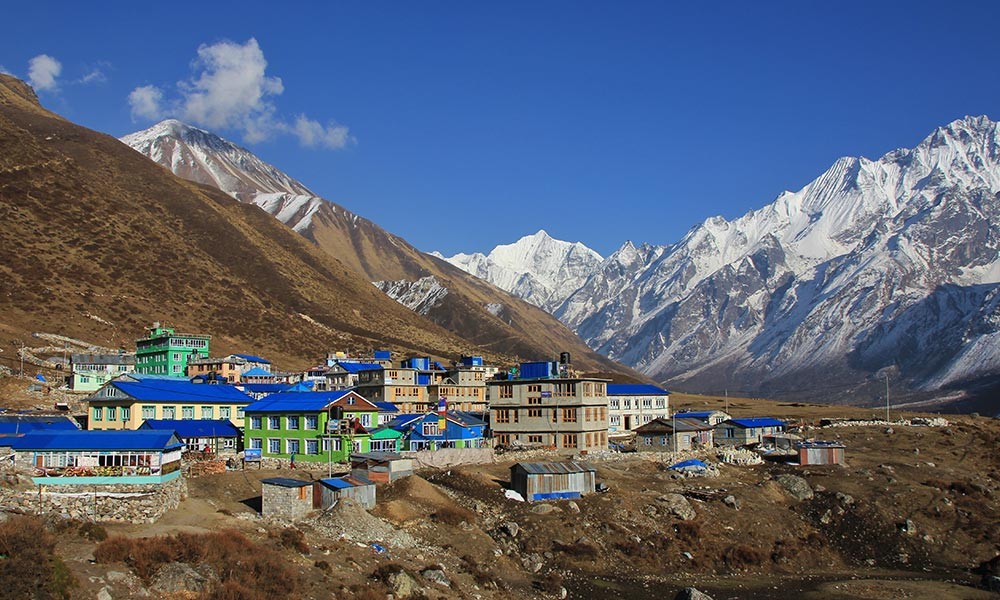
Local Guest House
11 NIGHTS
Tea houses are accommodations along trekking routes in Nepal that offer basic lodging and meals. All tea houses own and operate by local families. Every tea house has one large communal dining area with a wood-burning stove in the center. It’s a great spot to meet other trekkers, swap stories, warm up, and sip tea while you watch the sunset over the mountains.
These exact accommodations are not guaranteed. In some instances alternative accommodations of similar quality and location may be used.
